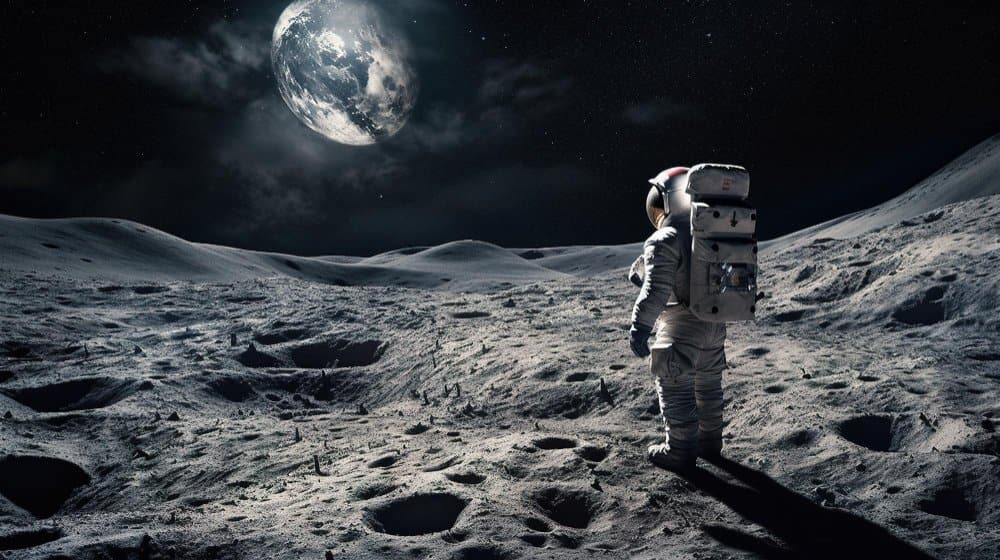China continues to pressure the U.S. in a reedition of the 1960s space race. While Americans accumulate delays and issues, the Asians are advancing faster and faster. It’s a kind of reedition of the space race and the race to the Moon between the Americans and the Soviets during the Cold War. In this second Cold War, the issue is repeating itself, but this time the United States seems to have a more technically and financially solid adversary.
The 1960s space race is being reedited with China replacing Russia as the great rival power to the U.S. Americans had planned to reach the Moon by 2025, but a series of delays and failures with the new spacecraft that were supposed to take them to our natural satellite have shattered their predictions. Meanwhile, Beijing is accelerating and is committed to sending humans to the Moon before this decade ends.
The two major economies of the moment, China and the U.S., are already competing militarily and in the markets to expand their influence worldwide. But now they are also competing in an old battleground: the Moon.
China’s plan is to arrive before 2030:
China announced several updates yesterday in its young and powerful space program. Among them, their intention to send taikonauts (as they call their astronauts) to the Moon before 2030 and to expand their new Space Station, which was completed last November. China built the Tiangong after being excluded from the International Space Station due to U.S. pressure, which was uncomfortable with the ties between China’s space program and its People’s Liberation Army.
According to Lin Xiqiang, Deputy Director of the China Manned Space Agency, Beijing’s plan will start with a brief stay on the lunar surface and “a joint human-robotic exploration.” Additionally, Lin stated that a fourth module will be added to Tiangong to support scientific experiments and provide the crew with better working and living conditions.
“We have a complete human space station near Earth and a human transportation system for round trips,” complemented by a selection, training, and support process for new astronauts, according to Chinese officials. A schedule of two crewed missions per year, according to recent statements, is “enough to achieve our goals.”
These goals aim to establish a permanent lunar base at the South Pole of the Moon before NASA. In fact, Beijing has brought forward its construction to 2027, instead of 2035 as originally planned. To achieve this, they want to replace their Long March 9, their current heavy and fully disposable rocket, with a fleet of reusable rockets like those proposed by SpaceX, whose main shareholder is Elon Musk.
As stated earlier by Wu Yanhua, Deputy Director of the Chinese Space Agency, they have accelerated the program because they want to “build a solid foundation for the peaceful use of lunar resources.” However, this Chinese reaction is in response to the Artemis Accords proposed by NASA to the entire international community, including China and Russia.
The Artemis Accords establish “a safe and transparent environment that facilitates exploration, science, and commercial activities for the benefit of all humanity.” The agreement requires all signatory countries to declare their policies and plans for solar system exploration, as well as to publish all scientific data obtained from space missions—something Beijing is unwilling to consent to.
U.S. suffers delays and considers budget cuts:
The U.S. has imposed a demanding schedule that will be difficult to meet. NASA has also set the lunar South Pole as its landing site, with the date being considered for the end of 2025.
The U.S. mission to return to the Moon is called Artemis, and to achieve this, they are relying on companies like SpaceX, Boeing, and Blue Origin. The program will spend about $93 billion between the fiscal years 2012 and 2025, of which $23.8 billion has already been spent solely on the Space Launch System (SLS) rocket, which has successfully flown after numerous delays, although it has cost far more than originally budgeted.
Meanwhile, the other main spacecraft of Artemis, SpaceX’s Starship—the largest and most powerful rocket ever created—remains unfinished. Its design is reusable, unlike the SLS, and it could reach not only the Moon but also Mars, as its CEO Elon Musk desires. Last April, a test flight of Starship ended with the spacecraft turning into a massive fireball. Now, the U.S. Federal Aviation Administration (FAA) has stopped the launches and is evaluating the destruction caused by the launch. Their approval for the next test launch could take months. The consequences of the explosion were significant, damaging third-party property, and it alarmed U.S. aerospace and aviation authorities, although Musk feels that the next test will be ready soon. Many people disapprove of the trial-and-error methods characteristic of SpaceX.
Moreover, the proposed budget deficit cuts by many members of the Republican Party, who now dominate the House of Representatives, could significantly reduce NASA’s budget and jeopardize many of its programs, especially the Artemis mission to return to the Moon, according to the specialized publication Space Policy Online.
NASA Administrator Bill Nelson stated last March that the cuts would be “devastating and potentially irreversible” for NASA’s programs, delaying or canceling many missions. Nelson outlined several potential scenarios due to the cuts, one of which “would significantly restructure or end” several elements of the mission. We will have to wait for the coming months to see the outcome of this issue.





0 Comments